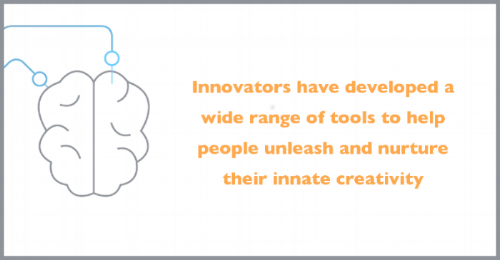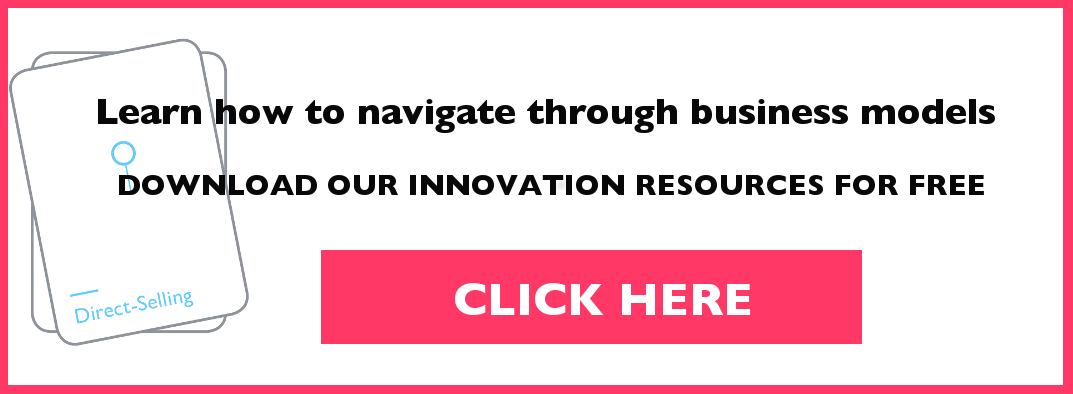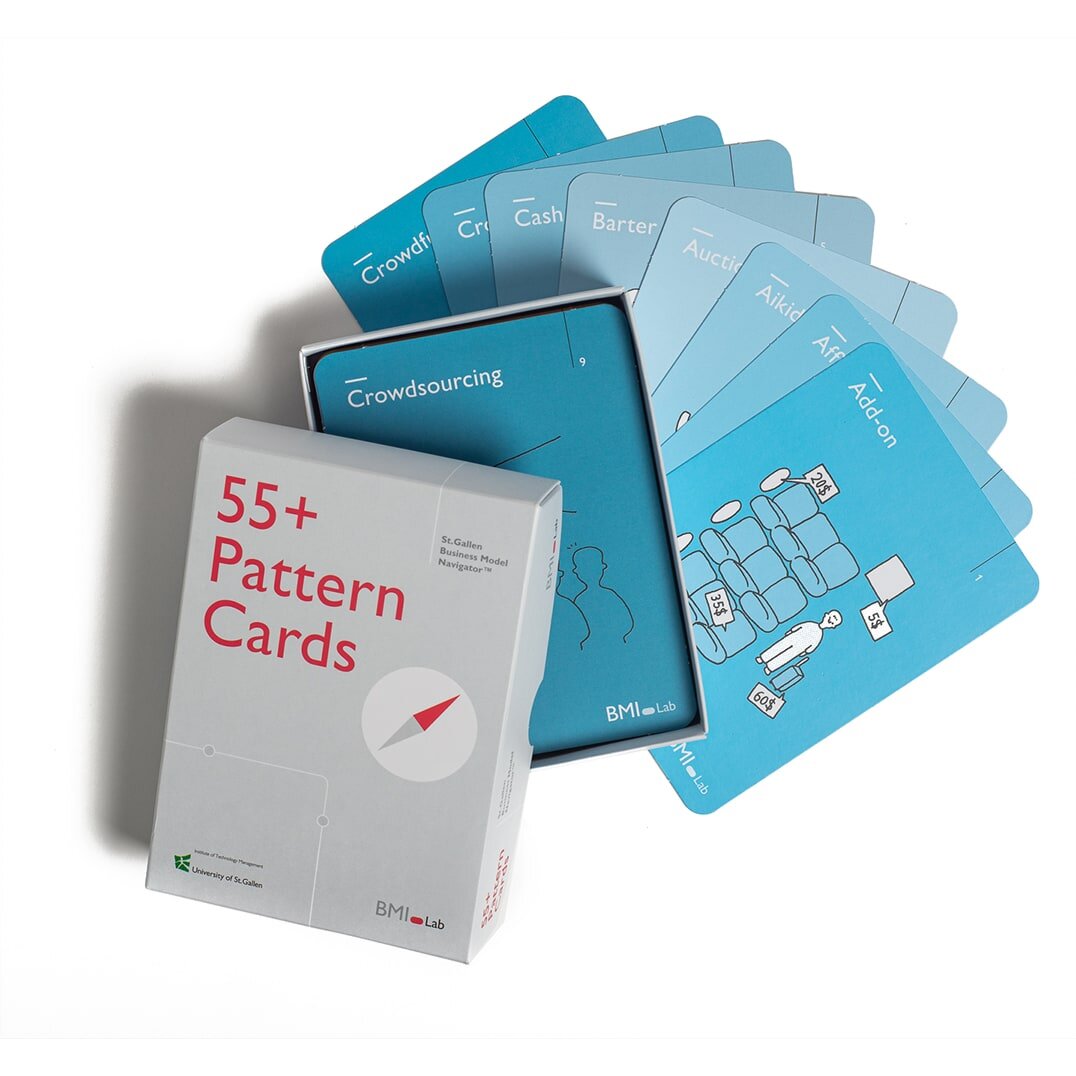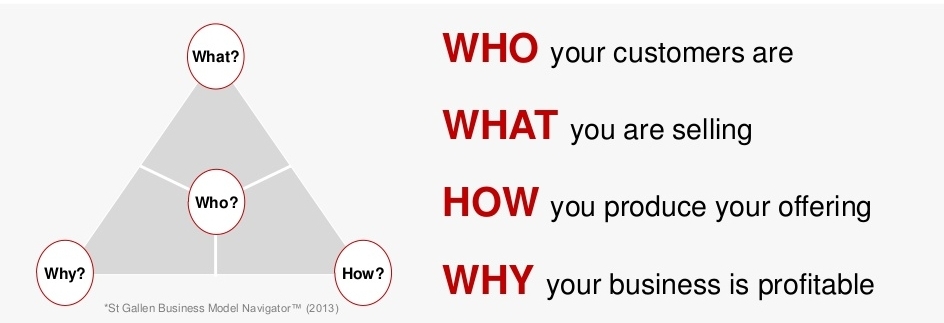Creativity is not a gift but a skill we can train with proper tools.
When we introduce somebody to innovation methodologies, especially those focused on business models, the role of creativity topic usually comes up. The most common question is whether we need to use creativity or not to innovate. There is a short answer for this: The majority of the most successful innovation methodologies give creativity a strong role. Moreover, all those methodologies clearly state that creativity is not a matter of genius or lucky lightbulb moments, but something that everyone can achieve with the help of proper tools.
From this basic statement we can go further into the topic of creativity in innovation. We can explain that the tools for creativity are used during a regular innovation process where teams should generate new ideas to further explore their feasibility as proper business models. For individuals not accustomed to innovation methodologies (which is almost everyone), the phases that utilize creativity are the most challenging..
Because of this challenge, innovators have developed a wide range of tools to help people unleash and nurture their innate creativity, which is usually constrained by the rules, procedures, and methods that many companies use. These restrictions are suited to run established companies, but they are not helpful to explore new possibilities during an innovation workshop or project.
Let us explore the most popular creativity tools for innovation. To get started it may be useful to separate them into two groups:
Divergence tools, focused on the generation of as many ideas as possible.
Convergence tools, which strive to analyze, filter and merge ideas, in order to select the best ones.
Within both groups there are a wide range of options to choose from, depending on the workshop and project. Below we will explain some of the most common tools, which also give us a short glimpse of what creativity for innovation means.
Divergent tools
All the creativity tools focused on divergence try to generate as many ideas as possible during a short time span, usually a few minutes during an ideation session. A basic rule here is not to criticize or judge new ideas as they come, as negativity is probably the best way to kill any ideation. Innovators should let their brains run free to generate as many possibilities as they can; filtering and merging will come later, during the convergence process.
Analogy cards
BMI Pattern Cards is a good example for the kind of analogy cards used to improve creativity during an innovation process.
Analogy thinking produces 80% of ideas during the ideation session. Basically, this means copying concepts from other industries and adapting them to our own. So, a great way to generate new business ideas is to check and review other business models and industries, even those not closely related to our own company. Try to analyze their business model, and figure out how we can apply it to our industry. During this process, new business possibilities will naturally arise.
Analogy cards, such as BMI´s Business Pattern Cards, are a great way to practice analogy thinking, since they give a clear reference to work while guiding the creativity process for better results.
Trend & technology benchmarking
Another alternative method for analogy thinking uses technology benchmarking as a reference. Sometimes it is useful to select several trend technologies, and try to figure out how to implement them in our company. For instance, if we choose IA, IoT, and blockchain, through a brainstorming process we would come up with new business ideas for our company based on current applications for these technologies. As we do that, we will find that new ideas come from the interlink between our experience and new possibilities coming from new technologies.
The “three ifs”
Lateral thinking tools are another useful methodology set to run an ideation session. This way of thinking involves looking at your situation in a different way -- essentially stepping sideways from our current business strategy. A nice way to do that is the “three ifs” tool, which is very useful to challenge our assumptions and change our perspective. In this phase, we should ask ourselves what would happen if our situation was different in three ways. For instance:
What would happen if I change my client?
What would happen if I have another value proposition?
What would happen if I change my value chain?
For better results, it is recommended to combine analogy with lateral thinking. For example, we can ask ourselves what would happen if we introduce AI to our value proposition. Or maybe we can try to figure out which clients we would have if we applied a particular business model from another industry to our own. While trying to answer these “if” questions, we will find that our previous business knowledge will help us to discover new possibilities, generating new ideas during the process. The possibilities for analogy and lateral thinking are huge, and that is fine, since these tools are designed to fire the spark for a fruitful ideation process, where we can widen our business scope.
Convergence tools
Convergence thinking tools are intended for a clear purpose: to help us to organize, filter and select all the ideas generated during the divergence process. This step requires a very different mindset, so the tools used for this purpose are also clearly different, focusing on analysis and synthesis, rather than idea generation. Many people might think that this kind of work is not creative, but in fact, it is. If we want to successfully finish any innovation process, running only the ideation step is useless. We should also have a clear method to filter the best ideas, leaving apart those not worthy enough, and focusing on the best ones.
Mind maps
Business model canvas are a great way to gather, organize and filter information and ideas coming from the ideation process.
Mind maps are usually a great way to organize ideas. We can use them to explore associations and divergences between ideas, clustering all those concepts coming from ideation. Mind maps will help to identify underlying trends, cleaning redundancies and narrowing our scope to fewer concepts to work with. Usually, we need to create a mind map to achieve this, although we can also use several prebuilt canvases and tools, such as a customer and business model canvas.
Thinking hat
The thinking Hat is a popular technique, very useful to explore the upsides and downsides of every idea. We might define several hats, each one representing a different mindset (for instance: the customer, the advocate, the devil´s advocate, and the board of directors). After pitching the idea, some people should wear different hats, analyzing the pitch from a different perspective. It might be useful to have the same person wear several hats, forcing him or her to look at the same idea from different angles. The feedback this technique generates is really valuable and helps the team to bring new perspectives into the discussion, dismissing those ideas that do not make it through the test, and improving those passing it.
Hundred euro test, or idea shopping
This tool is very useful for rating ideas. We can introduce several value propositions to a selected audience, usually in a canvas format, asking people to buy whatever proposition they want with just 100 euros. Euros can be freely allocated and expended in several places or in just one. No prices are set, so everybody gives to a particular idea whatever they think is worth paying. After the funds are distributed, we can easily identify the most popular ideas, as they will receive most of the money. This test allows the team to get really valuable feedback from outsiders, filtering ideas and leaving aside prejudices.
Creativity as a circular process
Both kinds of tools, divergent and convergent, are used during different phases of innovation. Sometimes we need to expand our scope to have a wider view of the choices we can make. After that, probably we will need to focus on a few ones, just to move forward in our exploration of new ideas and business models. For both purposes, we should choose the proper tools.
Moreover, this innovation process is not a linear path. We can go through the divergence and convergence process as much as we need, looking for new and potentially feasible ideas. We have to also keep in mind that creativity is about teamwork. We should encourage constructive criticism, including all perspectives on the process. Diverse teams are usually much better than homogeneous ones, since different mindsets and experiences can merge and enhance each other.
Depending on our goals, we might also create a strategy that mixes both tools, . Sometimes settling with one tool is not easy and requires a facilitator with experience and patience to lead the process, choose the right tools and lead people down the same path. With professional help, we will make the most of the tools chosen, unlocking the potential of any team.





